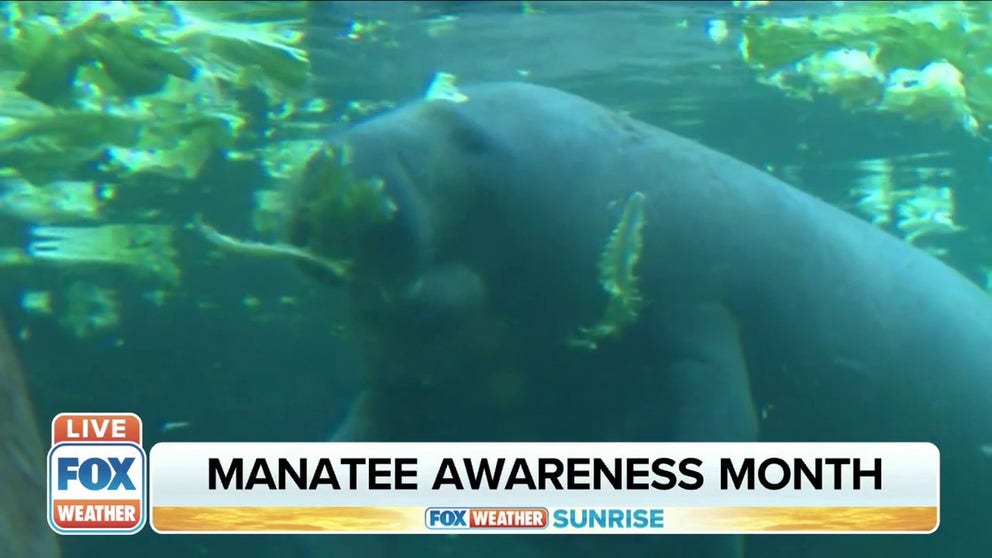Where to see manatees in Florida during the cooler months
Manatee deaths exceeded 1,000 in 2021 due to starvation
Citrus County, FL only place in U.S. where people can swim with manatees
The only place in the country you can swim with manatees is in Citrus County, Florida.
The first signs of cooler temperatures in Florida mean manatees will start gathering in the Sunshine State's springs warm-water discharges.
Florida's springs are a consistent 68 degrees year-round, which might be cold for swimmers, but in the summer months, the springs offer a respite from the heat. In the winter, when other fresh bodies of water drop in temperature, the springs provide a source of warmth for the gentle sea cows.
Despite their blubbery appearance, manatees have little body fat and cannot survive prolonged exposure to cold water. The sea cows swim freely in Florida's fresh waterways from April to late October. In the winter months, they migrate into Florida's springs or canals.
After a cold front, it's not uncommon to see hundreds of manatees grouped in Blue Spring State Park in Orange City or Homosassa Springs Wildlife Park.
Manatee Spring State Park in Chiefland is true to its namesake, where you can view sea cows from boardwalks throughout the park over the spring.
During the winter, manatees can be viewed from the boardwalk at Three Sisters Spring in Crystal River National Wildlife Refuge in Crystal River.
Canals in Florida rivers also become a gathering spot for manatees as they attempt to stay warm in numbers.
The Merritt Island National Wildlife Refuge provides a view of manatees from an overlook above the Haulover Canal.
Manatees are also known to gather around warm-water power plant discharges. The TECO Big Bend Power Station Manatee Viewing Center in Apollo Beach is open from Nov. 1 to April 15 from 10 a.m. to 5 p.m.
If you can't make it in person, Florida nonprofit Save the Manatee Club has several live video streams of popular spots around the state to see manatees.
This week, Florida was graced with some of its coldest temperatures of the season and Save the Manatee Club reports it counted 134 manatees at Blue Spring State Park on Tuesday.
Saving manatees from cold water shock and red tide
FOX Weather Correspondent Steve Bender interviewed Dr. Cynthia Stringfield at ZooTampa about what they’re doing to help save and rehabilitate manatees from cold water shock and red tide.
This past year has been devastating to Florida's official marine mammal. The Florida Fish and Wildlife Conservation Commission recently reported the state had surpassed 1,000 manatee deaths in 2021. In 2020, nearly 500 manatees died, according to FWC data.
Save the Manatee Club Executive Director and aquatic biologist Patrick Rose said the deaths are primarily due to severe seagrass losses in the Indian River Lagoon. Toxic algae blooms, fueled by fertilizer water runoff, are among the causes for killing seagrass, according to the nonprofit and wildlife experts.
Seagrass is the primary food source for manatees, and without it, they are starving to death.
Rose stressed that more manatees are still at risk of dying this winter.
"With the statewide mortality count, this year having exceeded 1,000 deaths, the problems of over-nutrification from human waste byproducts and fertilizers won’t be solved quickly," Rose said. "Therefore, we must find solutions to providing sufficient aid to those manatees most seriously affected to help them transition while restoration efforts are implemented."
In December, the Florida Fish and Wildlife Conservation Commission and the Florida Power & Light announced a pilot program to begin feeding starving manatees at the FP&L plant in Cape Canaveral.
Last legislative session, the FWC asked Florida lawmakers to approve funding to expand manatee rescue and mortality efforts.

